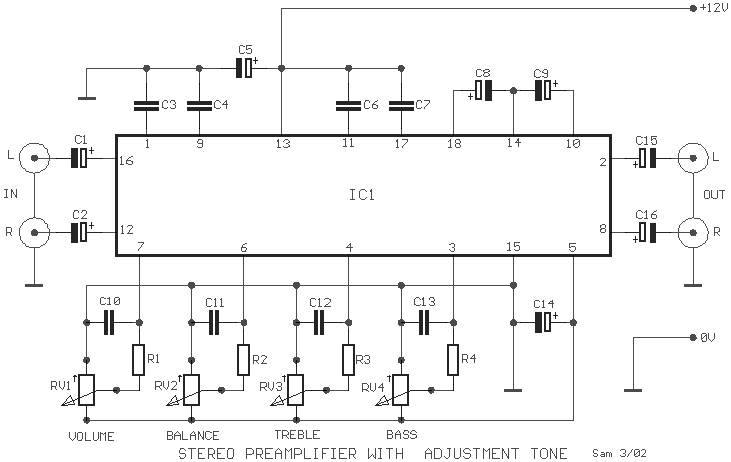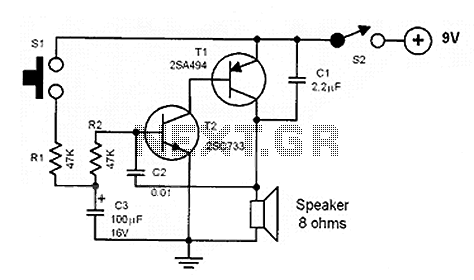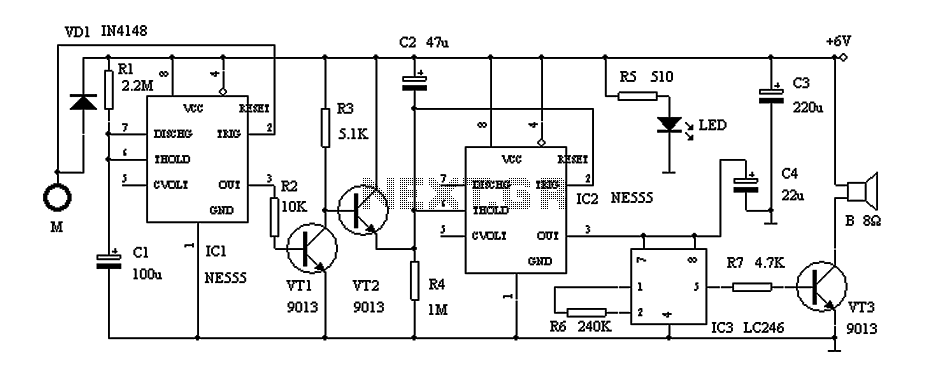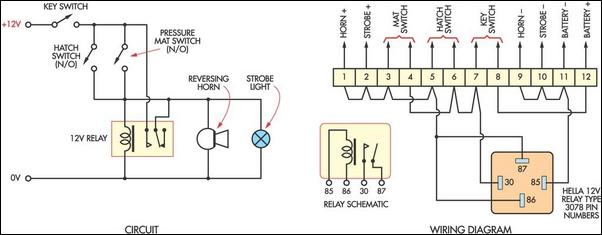
Low phase noise voltage controlled oscillator circuit
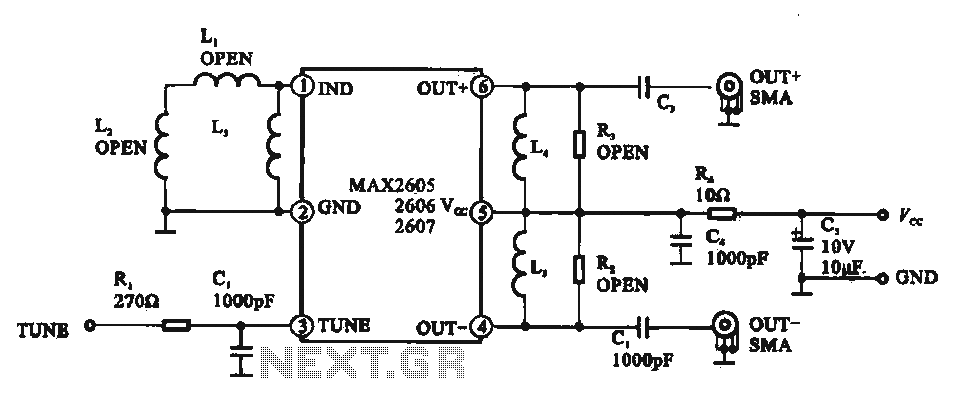
A low phase noise voltage-controlled oscillator circuit is presented, specifically integrated within the MAX2605-2609 voltage-controlled oscillator series. The circuit features a tuning voltage control terminal, allowing for adjustable oscillation frequency through a DC voltage input. The output of the oscillator circuit provides both positive and negative polarity oscillation signals.
The MAX2605-2609 series of voltage-controlled oscillators (VCOs) are designed to deliver low phase noise performance, making them suitable for applications requiring high-frequency stability and precision. The circuit operates by utilizing a tuning voltage that adjusts the frequency of oscillation in response to external control signals. The tuning voltage is applied to a dedicated terminal on the integrated circuit, which modulates the frequency output based on the input voltage level.
This VCO circuit typically employs a feedback mechanism to maintain the desired frequency stability. The output stage can generate oscillation signals with both positive and negative polarities, which are essential for various applications in communication systems, frequency synthesis, and signal modulation.
The design of the circuit includes critical components such as inductors, capacitors, and resistors, which work in conjunction with the internal architecture of the MAX2605-2609 to optimize performance. The low phase noise characteristic is achieved through careful selection of these components and the implementation of a well-designed feedback loop that minimizes jitter and phase distortion.
Applications for this low phase noise VCO circuit include RF transmitters and receivers, local oscillators in phase-locked loops (PLLs), and other RF signal processing tasks where signal integrity and frequency accuracy are paramount. The ability to adjust the oscillation frequency via a DC voltage input allows for flexibility in tuning, making this circuit a valuable component in modern electronic systems.Low phase noise voltage controlled oscillator circuit a It shows a typical low phase noise voltage controlled oscillator circuit, which is integrated in MAX2605-2609 voltage controlled oscillator circuit. Feet tuning voltage control terminal, the oscillation frequency of the DC voltage adjustable end chip. feet and legs were positive and negative polarity of the oscillation signal output.
The MAX2605-2609 series of voltage-controlled oscillators (VCOs) are designed to deliver low phase noise performance, making them suitable for applications requiring high-frequency stability and precision. The circuit operates by utilizing a tuning voltage that adjusts the frequency of oscillation in response to external control signals. The tuning voltage is applied to a dedicated terminal on the integrated circuit, which modulates the frequency output based on the input voltage level.
This VCO circuit typically employs a feedback mechanism to maintain the desired frequency stability. The output stage can generate oscillation signals with both positive and negative polarities, which are essential for various applications in communication systems, frequency synthesis, and signal modulation.
The design of the circuit includes critical components such as inductors, capacitors, and resistors, which work in conjunction with the internal architecture of the MAX2605-2609 to optimize performance. The low phase noise characteristic is achieved through careful selection of these components and the implementation of a well-designed feedback loop that minimizes jitter and phase distortion.
Applications for this low phase noise VCO circuit include RF transmitters and receivers, local oscillators in phase-locked loops (PLLs), and other RF signal processing tasks where signal integrity and frequency accuracy are paramount. The ability to adjust the oscillation frequency via a DC voltage input allows for flexibility in tuning, making this circuit a valuable component in modern electronic systems.Low phase noise voltage controlled oscillator circuit a It shows a typical low phase noise voltage controlled oscillator circuit, which is integrated in MAX2605-2609 voltage controlled oscillator circuit. Feet tuning voltage control terminal, the oscillation frequency of the DC voltage adjustable end chip. feet and legs were positive and negative polarity of the oscillation signal output.

